
Introduction
It’s rather interesting that you see so many fish at Korean Buddhist temples, especially since there is no direct connection between fish and Buddhism. Additionally, fish were never objects of worship in Buddhism, as well.
An argument has been made that the reason that fish exist at temples, whether it’s as a painting, a wind chime, or carp swimming around a temple pond, is that they are meant to remind practitioners to remain vigilant and focused on their practice. The reason for this belief is that it’s thought that fish never sleep. While this is one interpretation, there are several other interpretations concerning the fish you might see at Korean Buddhist temples.
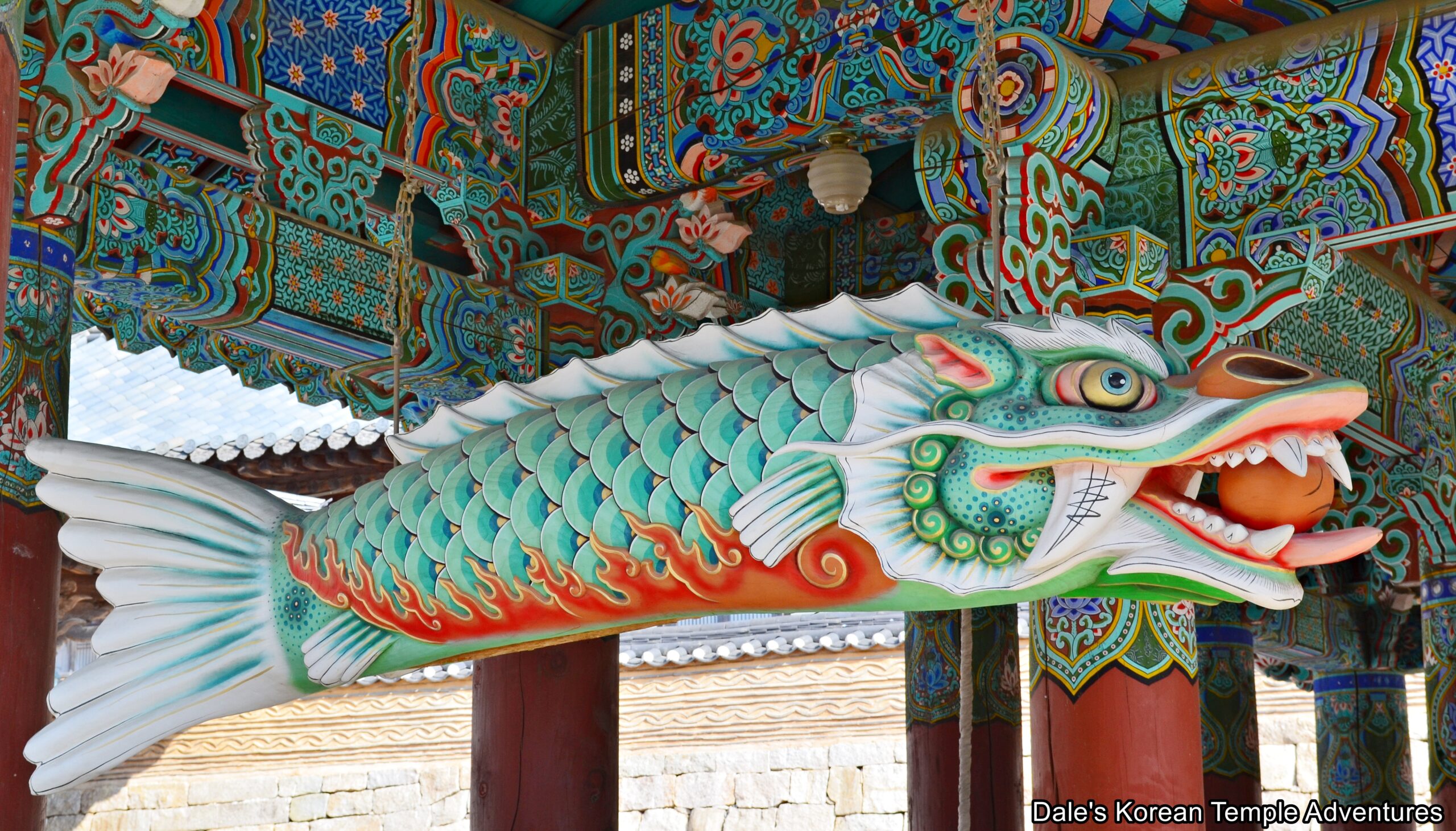
The Mokeo and Moktak
The word “moktak,” which is referred to as “mouduo” in Chinese, is mentioned in the “Analects of Confucius” as a metaphor for Confucius himself. Originally, the “mouduo” referred to bells that were attached to the staff carried by monks. The term “mouduo” was used specifically for bells with wooden clappers, while bells with bronze clappers were referred to as “jinduo,” or metal bells.
It’s important to note that the “mouduo” and the “moktak” are different. While the “mouduo” contains clappers, the “moktak” only makes sounds when struck with an exterior wooden stick.
The Korean “moktak” originates from the “mokeo,” which is known as a “muyu” in Chinese. The “mokeo” is the third of four traditional percussion instruments housed inside the Jong-ru (Bell Pavilion) at a Korean Buddhist temple. The “mokeo” is a hollowed out log carved into the shape of a fish. In English, the “mokeo” is known as a “wooden fish drum.”
The design of the “mokeo” is meant to resemble a carp. There are a few reasons for this design. One is that a fish never closes its eyes. And much like the wind chime that adorns temple shrine halls, the sound of the drum is meant to remind practitioners to never relax in their self-cultivating practices. And the second reason that the “mokeo” is shaped like a carp is that a fish swims through water unimpeded. Furthermore, in the past, large bodies of water were seen as obstacles that kept people apart. So people used the ocean as a symbol for going to the Western Paradise because the water was hard to traverse. So instead of the sky, people looked to water.
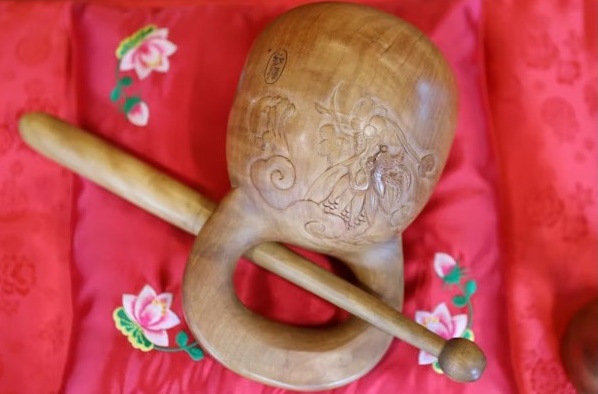
As for the “moktak,” there are two types of fish-shaped wooden sounding instruments called “muyu” that are found in China. The first is similar to one of the four traditional Buddhist percussion instruments, while the second type is similar to the Korean “moktak.” Korean Buddhism adopted the latter and modified it into a “moktak.”
Traditionally, Chinese people didn’t sit on the floor, and their “muyu” was typically placed on a cushion and remained stationary. This design required no handle because there was no need to lift it during its use. However, following the Japanese invasion of Korea during the Imjin War (1592-98) in 1592, and the Qing invasion of Joseon in 1636, new architectural styles were produced in Korea, including the adoption of floor sitting.
Because of this new style of sitting, it necessitated the need for practitioners to repeatedly stand up and sit down, while also holding the wooden gong during Buddhist ceremonies. As a result, the fin portion of the fish-shaped percussion instrument was drilled to incorporate a strong handle for securing a grip to hold onto the instrument. It was at this time that the name of the wooden percussion instrument changed from that of a “mokeo” to that of a “moktak.” Thus, the wooden instrument changed from an outdoor instrument, to an indoor instrument in the form of the Chinese “muyu,” and then evolved into a “moktak” for greater convenience during Buddhist ceremonies. And what’s even more interesting about the “moktak” is that it’s exclusively used in Korea.
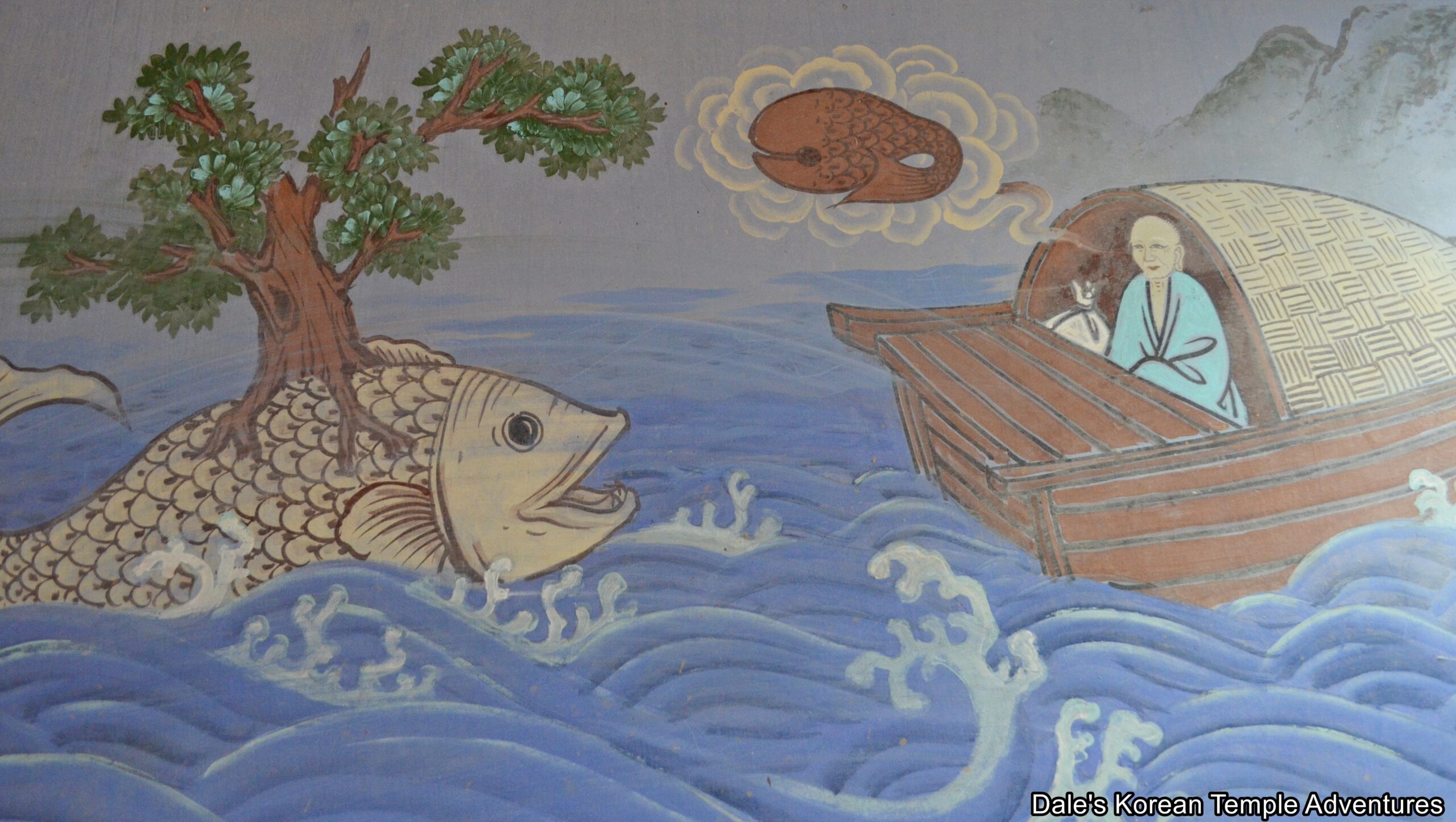
The Moktak (Wooden Hand Gong) Tale
The “moktak” is accompanied by a fascinating legend that can be seen as a mural on the walls of some temple shrine halls.
According to this tale, a novice monk was being lazy and ignored his teacher’s guidance; as a result, this novice monk was reborn as a giant fish. A seed fell on the fish’s back and grew into a large tree, causing the novice monk fish great pain. The fish appeared in the dream of its former teacher, pleading for a ritual to secure a more auspicious birth and freedom from the pain it was currently suffering through.
Touched by compassion for his student, the master monk performed the ritual as requested. As a result, the fish died and its body was washed ashore. The teacher removed the tree growing from the fish’s back and made a “moktak” to serve as a lesson to his students.
This tale was probably first made to help educate young monks about the importance of diligence and listening to one’s teachers.
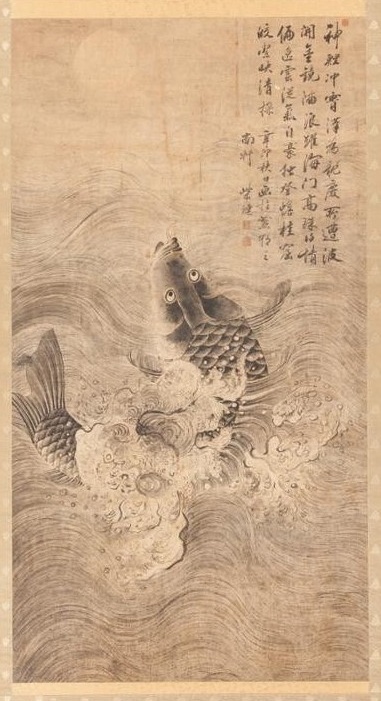
Fish and Dragons
Dragons are an integral part of Chinese culture. What distinguishes Chinese dragons is their origin.
The image of the Chinese fish was first portrayed as a flying creature in Neolithic earthenware, which was discovered in areas connecting the Yellow River Valley Civilization. This unique depiction of flying fish eventually merged with the concept of the dragon, giving rise to the idea that fish could change into dragons.
This belief is especially true with fish that have barbels. According to a Chinese tradition, a carp that could swim upstream and then leap into the falls of the Yellow River at Longmen (Dragon Gate) would be transformed into a dragon. Longmen, or “Dragon Gate” in English, is located at the border of Shanxi and Shaanxi, where the Yellow River flows through a section of the Longmen mountains, which was made by Yu the Great, who cut through the mountains.
According to one version of this Chinese tale, forceful water brought several carp down the river, and the carp couldn’t swim back. The carp complained to Yu the Great. As a result, his wife, who was the Jade Emperor’s daughter, explained all of this to her father on behalf of the trapped carp. The Jade Emperor promised that if the carp could leap over the Dragon Gate, then they would become mighty dragons. So every year, all of the carp competed to see which one could leap over the Longmen Falls. And those that succeeded were immediately transformed into dragons and flew off into the sky.
As a result of the gorge being named Longmen, which literally means “dragon gate” in English, this gave rise to the phrase “entering the dragon gate,” which refers to a person making a difficult journey that one must overcome to achieve success.
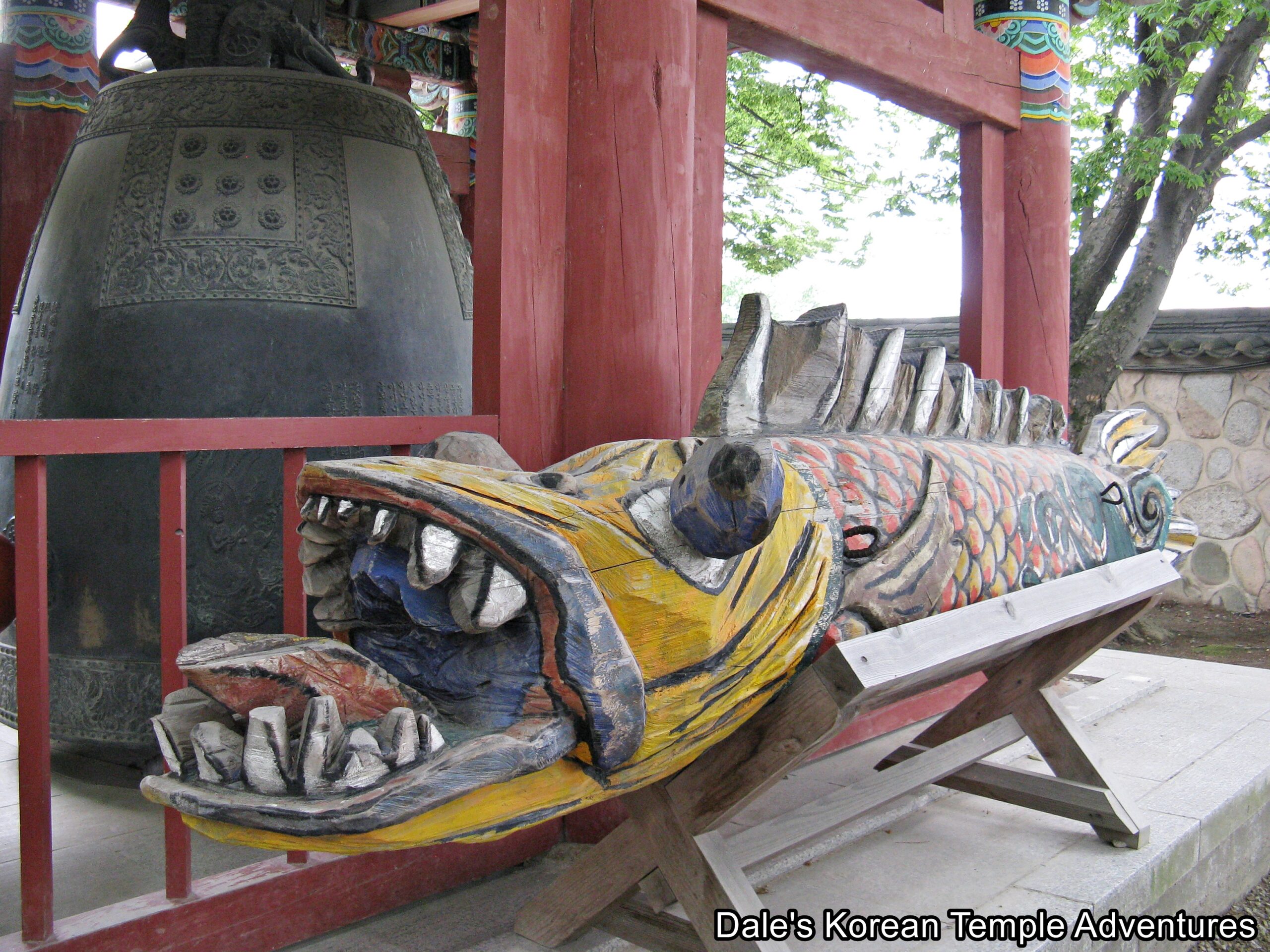
Conclusion
In Buddhism, and over time, the fish has evolved symbolically. It has changed from a fish that could fly into a fish that turned into a dragon. Also, the evolution of the fish gong from a “mokeo,” into a Chinese “muyu,” and finally into a “moktak,” has seen the slow evolution of the imagery of the fish change through necessity, as well. The reason for this change, and through Chinese Buddhism, the fish is considered sacred. Not only does it remain sacred because of the belief that it never sleeps, but it also remains sacred and relevant because of the higher symbolic aspirations of achieving full awakening through spiritual growth.


Recent comments